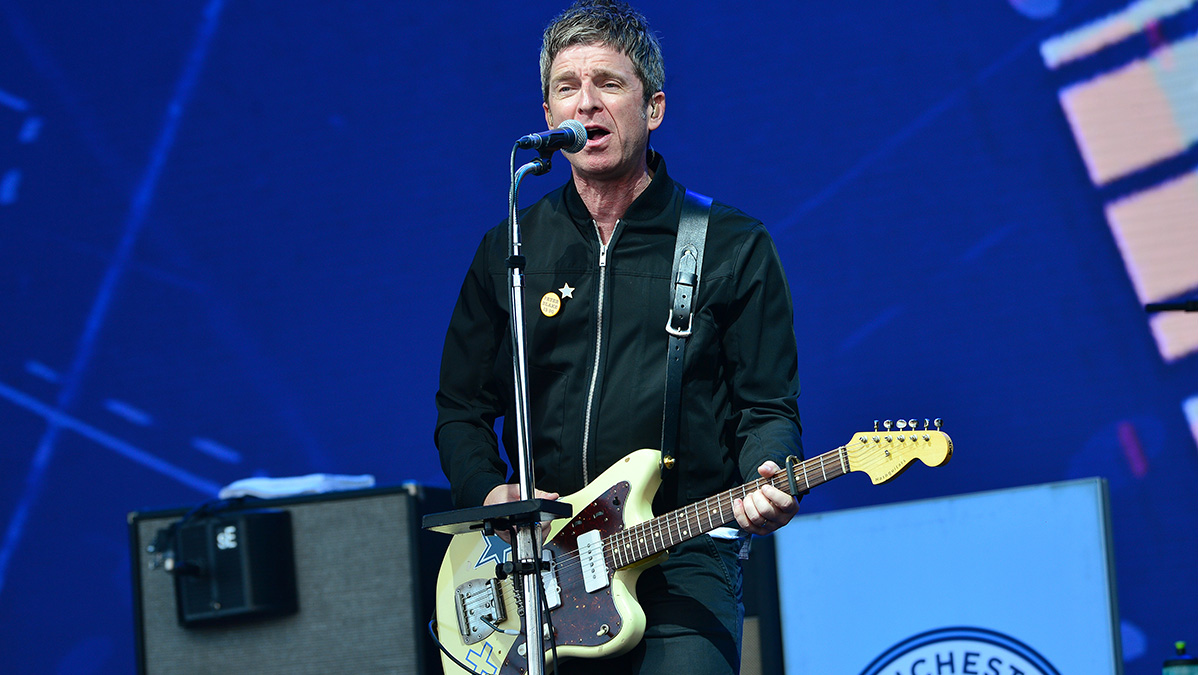Noel Gallagher says guitar chords are “completely meaningless” to his songwriting
The High Flying Birds frontman and former Oasis guitarist is all about the melody “because that’s what sticks”

Noel Gallagher has built a career and cemented his legacy as a songwriter on the back of guitar chords. We even ran a lesson in 4 classic Oasis chords – the building blocks you need to write in Gallagher’s style.
But in a recent interview with Cerys Matthews on BBC Radio 2, in which the High Flying Birds frontman and former Oasis guitarist looked back on his career and unpacked his approach to songwriting, Gallagher insisted that chords were the last thing on his mind when he was writing tracks such as Wonderwall and Champagne Supernova.
“The chords are nothing in what I do,” he said. “The chords are nothing. They are completely meaningless. It is all about the melodies because that’s what sticks. Because the guy when he is going to work in the morning is whistling the melody. He is not thinking about chords.”
Those looking to get a bead on how Gallagher crafts songs won’t be in luck. As he told Matthews, even when he met the Beatles producer George Martin, who said that Gallagher was one of his generation’s greatest songwriters, he didn’t quite know what to tell him.
“I’m a chancer from a council estate,” he said. “I don’t have a clue what I am doing. I just go by feel and ear, and that’s it.”
Matthews asks him what he told George Martin.
“Well I just said, ‘I did this. And I put my fingers there.’ And he was like, ‘Interesting, and there’s a suspended eight thing going on…’ And I’m like, ‘I couldn’t honestly say,’” replied Gallagher.
Get the MusicRadar Newsletter
Want all the hottest music and gear news, reviews, deals, features and more, direct to your inbox? Sign up here.
He couldn’t honestly say where the melodies came from either, and admits that he is not that interested either. But having the idea and then being able to articulate it in song was a process that took years to develop.
“It wasn’t a conscious thing to come up with these great melodies,” he said. “I don’t know where they come from. I don’t wanna know where they come from. I get asked a lot, ‘Why, how, what?’ I’m not interested; it is all magic to me.
“It was only for my own amusement. It wasn’t like I was a gifted prodigy and I was going to become a songwriter. It took me from getting to hum a long a melody at 14 to 27, my first song came out, so it wasn’t like I was rushing to get there.”
Gallagher recalls picking up an acoustic guitar for the first time when his dad brought one home from the Irish social clubs that he used to spin Country and Western records in – “It must have been won at a game of cards because he never played it” – and started out playing Joy Division basslines, before learning the Animals’ version of The House Of The Rising Sun.
But there was no question of taking lessons.
“It’s not that I don’t believe in them but if someone teaches you then you are putting their teaching into practice, whereas, if you get there yourself, it’s coming from a place that is undefinable and within, so it’s you,” said Gallagher.
The undefinable was a recurring theme in the conversation. Recounting the story behind Supersonic, in which the band were to record Bring It On Down at The Pink Museum in Liverpool, Gallagher said the song came to him and was written in the time it took someone to go and come back from the chip shop.
“It fell out of the sky,” he said, and the track was written, recorded and mixed within hours, with the very same mix ending up on the band’s 1994 breakthrough album, Definitely Maybe. “And it is still my favourite Oasis song,” said Gallagher.
Matthews asks about the pick slide that opens Supersonic? “Why I did that I don’t know,” he admits “It was a real magic moment where the gods of rock ’n’ roll just threw it on you. It proved to me that if you are open to it, it’s there – you’ve just got to let it happen.”
To be honest, I don’t consider myself a guitarist, so I don’t sit around and think about the whole thing too much
Noel Gallagher
Speaking to MusicRadar in 2011, Gallagher was a little more prescriptive in talking about his approach to chords, even if he didn’t think of himself as a guitarist.
“To be honest, I don’t consider myself a guitarist, so I don’t sit around and think about the whole thing too much,” he said. “I only try to think about the songs, you know? I've got my own style on the guitar, sure, and I play rhythm in a certain way, and I use certain inflections. People have said that to me, and I understand it. But I don't have any magic answers - I just do what I do.
“I tend not to play a lot of major chords. I think I drop the major notes and play fifths, you know what I mean? Again, it’s nothing I spend a lot of time on. I try to play like myself, and I think I do. But I don’t dwell on the whole aspect of guitar technique and stuff. I’m a songwriter.”
You can check out the whole conversation between Matthews and Gallagher over at BBC Radio 2.
Jonathan Horsley has been writing about guitars and guitar culture since 2005, playing them since 1990, and regularly contributes to MusicRadar, Total Guitar and Guitar World. He uses Jazz III nylon picks, 10s during the week, 9s at the weekend, and shamefully still struggles with rhythm figure one of Van Halen’s Panama.










